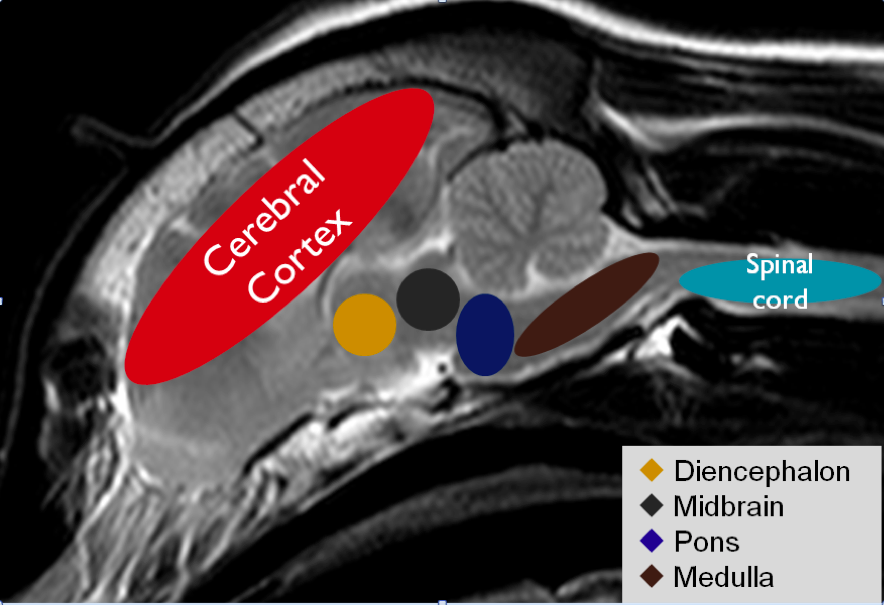Neurological Examination of the Dog and Cat: Introduction
Luis Gaitero
Introduction to the Neurological Examination
The major anatomical regions of the nervous system are divided in central nervous system (brain and spinal cord) and peripheral nervous system. The brain is further divided in forebrain (or thalamo-cortex), brainstem and cerebellum.The forebrain or thalamo-cortex includes the cerebrum and the diencephalon (thalamus, hypothalamus). The brainstem includes: midbrain, pons, and medulla oblongata (usually denominated just medulla).

To evaluate the status and integrity of those components of the nervous system we use the neurological examination.
The goals of the neurological examination are:
- To identify/confirm presence of a neurological problem
- To localize the lesion within the nervous system
- To assess severity/extension lesions, and provide a prognosis
It is important to remember that the neurological examination should be always preceded by a complete general physical examination and an orthopedic examination, particularly in animals with gait abnormalities. That will allow us to detect the presence of systemic and/or orthopaedic conditions that could be affecting the nervous system or that could mimic a neurological disorder. Furthermore, consider that sedation, analgesia or episodic neurological conditions (as seizures) could transiently influence our findings.
The neurological examination is divided in 6 sections based on the assessment of these components:
- Mental status
- Gait and posture
- Cranial nerve examination
- Postural reactions
- Spinal reflexes
- Palpation
Mental status, and gait and posture components are sometime classified as “Observation” component, as those are a hands-off evaluation similar to what is performed at the start of the general physical examination.

